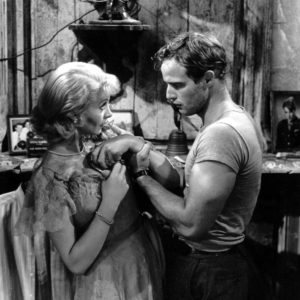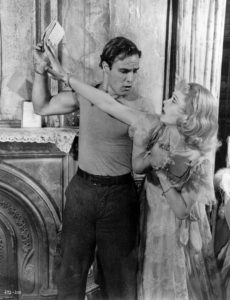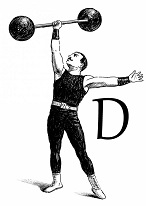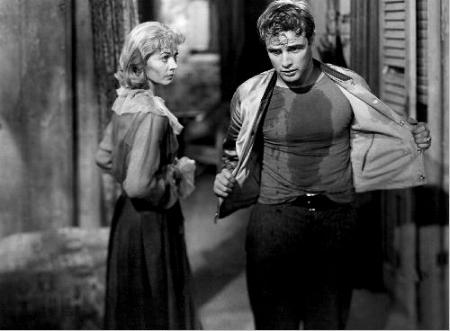A lustful blonde emerges from a subway car amidst a fog filled southern street and asks a local for directions to a streetcar named ‘desire.’ The opening of the 1951 film, based on a play by Tennessee Williams, sets the pieces in place. An obviously upper class southern belle sticks out like a sore thumb in this destitute New Orleans neighborhood.
“A Streetcar Named Desire” is a classic film, lauded by critics, and heralded by seemingly everyone who encounters it. It was nominated for an astonishing 12 Academy Awards (I assume the competition was lacking that year) and it won four.
Whether or not you’ve seen it, you surely know the infamous scene with Marlon Brando’s character Stanley screaming to his besieged wife “Stella!”
While everyone knows “The Godfather,” “Streetcar” launched Brando’s career, and he would be nominated for the first of four consecutive Academy Awards for Best Actor with the role of Stanley Kowalski. Brando is joined by the notorious Stella (Kim Hunter) as his browbeaten wife.
Vivien Leigh is the real star of the film as Stella’s sister Blanche DuBois. Leigh is the picture perfect image of a dame you’d imagine if thinking about some seedy back and white lounge. Leigh is a good actress, managing to work well with the limitations of the era.

The plot is a bit senseless, reeking more of the play that was its genesis than of a motion picture. Blanche has left her Mississippi estate amidst mysterious circumstances to take refuge with Stella and Stanley in the French Quarter. She’s holding a secret, though it will take the entire painfully slow two hour run time to divulge it.
In the meantime, she has no problem clashing with Stanley or attempting to find love in the arms of Stanley’s friend Mitch (Karl Malden). If Brando is a leading man, Malden, a lanky and bespectacled gent with a comb over is the furthers thing away.
The movie is entirely dialogue driven – fitting in with the plot and the time period, falling a decade or so before special effects would take over for Hollywood. Dialogue driven films can work if written correctly. “Streetcar” has a lot of cheesy lines like “funerals are pretty compared to death” or Stanly’s “be comfortable that’s my motto where I come from.” I’m not entirely sure what that even means.
Its funny to note Brando’s appeal to the ladies. The actor delivers perfectly in scenes where Stanley is in violent fits of rage. In fact, the emotionally and physically abusive Stanley is a considerably unlikeable character on all fronts. I’m sure in 1951 this was an original concept, as was his ability to lure women.
 27 year old Marlon Brando is definitely a mans man, with pants pulled up to his chest, cigarette dangling from his lips with a reserve tucked loosely behind his ear. One scene shows him taking off his shirt to reveal a body that could be snapped in half by Vin Diesel or The Rock, but for the fifties he was a walking God.
27 year old Marlon Brando is definitely a mans man, with pants pulled up to his chest, cigarette dangling from his lips with a reserve tucked loosely behind his ear. One scene shows him taking off his shirt to reveal a body that could be snapped in half by Vin Diesel or The Rock, but for the fifties he was a walking God.
Where Brando fails is when speaking lines in a tepid tone. His mumbling voice is iconic in the role of Don Corleone, but in “Streetcar” it sounds like he stuffed his mouth with marbles before talking.
“A Streetcar Named Desire” may be a classic, but by today’s standards its a boring movie with weird dialogue and loud repetitive and annoying yelling and shouting scenes.
Brando is a man for sure, but the “Streetcar” leaves much to be desired.


